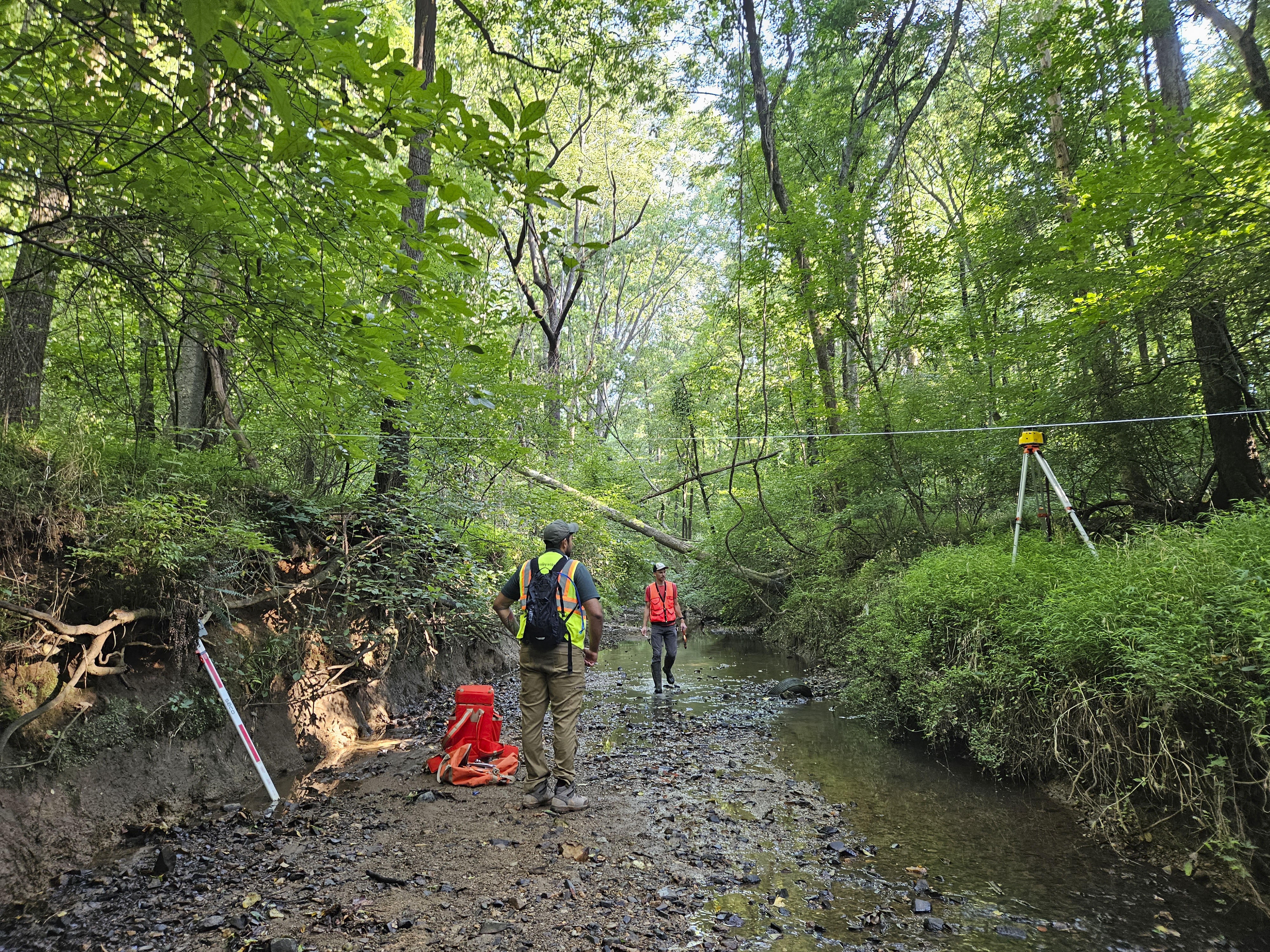Frequently Asked Questions
1. What is stream restoration and what are the benefits?
Streams are constantly evolving, bending, and straightening. They may become degraded due to historic manmade channelization, high flow events, or significant erosion. Increased channel and bank erosion separate streams from their floodplains and create sediment pollution, negatively impacting water quality for fish and other aquatic life. A degraded stream will continue to evolve and attempt to return to a natural state, which can take several decades. Stream restoration uses natural channel design techniques to improve damaged streams and help them to return to this more stable state. This is achieved by grading the stream banks so that the floodplain is accessible, as well as adding structures to prevent future erosion, oxygenate the water, and provide habitat for aquatic life. These changes allow wildlife to access the stream more easily, and they also reduce erosion and flooding that may threaten property.
Stream restoration uses natural channel design techniques to improve historically straightened or eroded streams to achieve a more stable natural state. Streams are constantly evolving and looking to bend or straighten based on the slope of the valley which may lead to more bank and channel erosion. Increased channel and bank erosion create more sediment pollution in the streams, negatively impacting water quality for fish and other aquatic life. By restoring streams, we can help them return to that stable state by grading the stream banks so that the floodplain is accessible, and wildlife can more easily access the water. This also reduces erosion and flooding that may threaten property.
More information on stream restoration can be found on the Charlotte-Mecklenburg Storm Water Services' Surface Water Quality Monitoring page.
2. When will construction start?
Construction is anticipated to begin in the Spring of 2025 and will have an approximate 1 year duration.
3. What will construction look like?
The site will have large construction equipment, bare soil, and some trees will be cut down to access the area. The construction equipment will work in the streams and cross over them, and the flow of the stream may be pumped around the area currently under construction. The project includes the protection of as many trees as possible during construction, and the area will be replanted after completion with native shrubs, trees, grasses, and flowers.
4. What is the real estate process?
In order to perform this stream restoration project, easements will need to be obtained. TELICS has been contracted to acquire easements. They will contact property owners to provide the necessary information during this process.
For Real Estate/Easement Inquiries:
Andrew Ponder, SR/WA, TELICS
[email protected]Andrew Ponder, SR/WA, TELICS
(704) 657 3323

